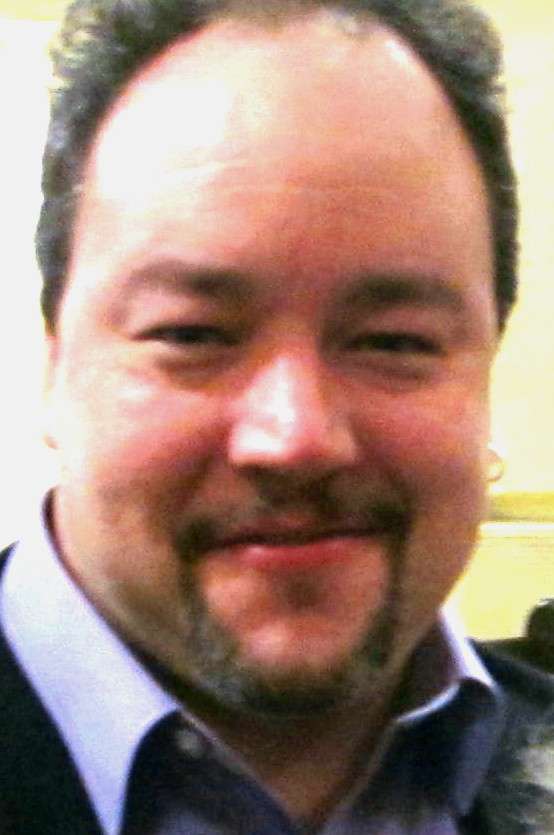|
Back
With Mallets Towards All New York
Park Avenue United Methodist Church
11/20/2011 -
Heitor Villa-Lobos: E minor and E major Preludes from Five Preludes for Guitar (arranged by Mr. Nakura)
Tsuneya Tanabe: Masque
C.P.E. Bach: 12 Variations on the Folia of Spain (arranged by Mr. Nakura)
Robert Paterson: Forest Shadows (World Premiere)
Johann Sebastian Bach: Violin Partita No. 3 in E major, BWV 1006 (Arranged by Mr. Nakura)
Two Irish Folk Song Arrangements (Arranged by Mr. Nakura)
Jacob Bancks: The Trees Where I was Born (World Premiere)
Makoto Nakura (Marimba)

M. Nakura (© Coco T. Dawg)
For my first Makoto Nakura concert some twelve years ago, I had to be dragged, almost kicking and screaming. He was performing in Hong Kong, and a friend insisted I go.
“Are you mad??” I asked. “Outside of Lionel Hampton, nobody’s gonna take me to see somebody banging on wooden bells.”
Needless to say, that first visit was so astounding that I have tried to keep up with Mr. Nakura’s rocketing career. A rare few percussion players have made a living, but so far as I know, Mr. Nakura is the only purely classical marimba player who has made a successful career at his instrument. The first player to win the Young Concert Artist First Prize, the Kobe-born artist has performed in international concert halls worldwide, with a series of highly acclaimed disks. Mr. Nakura’s home is in New York, but his travels make appearances here rare. So with his recital at a church yesterday, it was time to renew his musical acquaintance.
I wouldn’t be so bold as to say he has improved. For, form the beginning, he has used his mallets in an unsurpassably magical way. That word is not used lightly. One can understand finger movements directly on a keyboard instrument. But holding two sticks in each hand, trying to fathom his four-part counterpoint, his changes in harmonies and even in coloration, can only be attributed to the black (or white) arts.
True, the word “interpretation”–say, in discussing how Brendel, Ashkenazy or Hamelin might interpret a Schubert sonata–is probably out of the question. Here, it is the legerdemain rather than the interpretation. Or, in Mr. Nakura’s case, the arrangement which he makes, which is so stunning.
His arrangement from two of Villa-Lobos popular guitar preludes, was complex, but it attempted to capture the contrapuntal wonders of all guitar strings. That was, to some degree, unfortunate in the church. No matter how he tried, the clarity of the sounds was thickened by the resonance of the reverberating setting. First-time listeners were astounded at his technique, but one missed that Villa-Lobos austerity.
Yet one cannot doubt that J.S. Bach would have loved his arrangement of the Third Violin Partita, where Mr. Nakura played one or two lines at a time. Not at a dizzying pace (that would be reserved for the inevitable Flight of the Bumblebee encore), bit with the grace and dance of Bach’s original.
Mr. Nakura’s arrangement of C.P.E. Bach’s La Folia variations is already recorded. It’s a slow beautiful work, save for a volcanic etude.

R. Paterson (© Coco T. Dawg)
Robert Paterson was present for the world premiere of a work he wrote for the artist, Forest Shadows. Initially, it was difficult to see where it was going, but it soon eased into a pleasant piece of impressionism, an atmospheric work, the sort which reflected (perhaps unconsciously) the Guatemalan jungle from which the original marimba was created.
The other premiere, Jacob Bancks’ The Trees Where I was Born, wasn’t quite new. In fact, I had heard the original, again written for Mr. Nakura, this with chorus, singing two poems by Walt Whitman. The solo work was so good that Mr. Nakura asked the composer to arrange it without vocal lines. It was still brilliant playing. But I wanted to hear Whitman’s imaginary paeans to “reptiles...the bellow of the alligator, the sad noises of the night-owl and the wild-cat and the whirr of the rattlesnake.”
Whitman took poetic license there. Makoto Nakura needs no license to continue on his journey. Perhaps, like Dr. Livingston, his explorations on the marimba are necessary. He must arrange works for instrument, and he must commission others to write for it. After all, he is breaking new ground. Not simply in technique but in the diversity of colors, intricate harmonies and, in effect, turning the marimba into an instrument which might some day share percussive honors with the piano itself.
Harry Rolnick
|